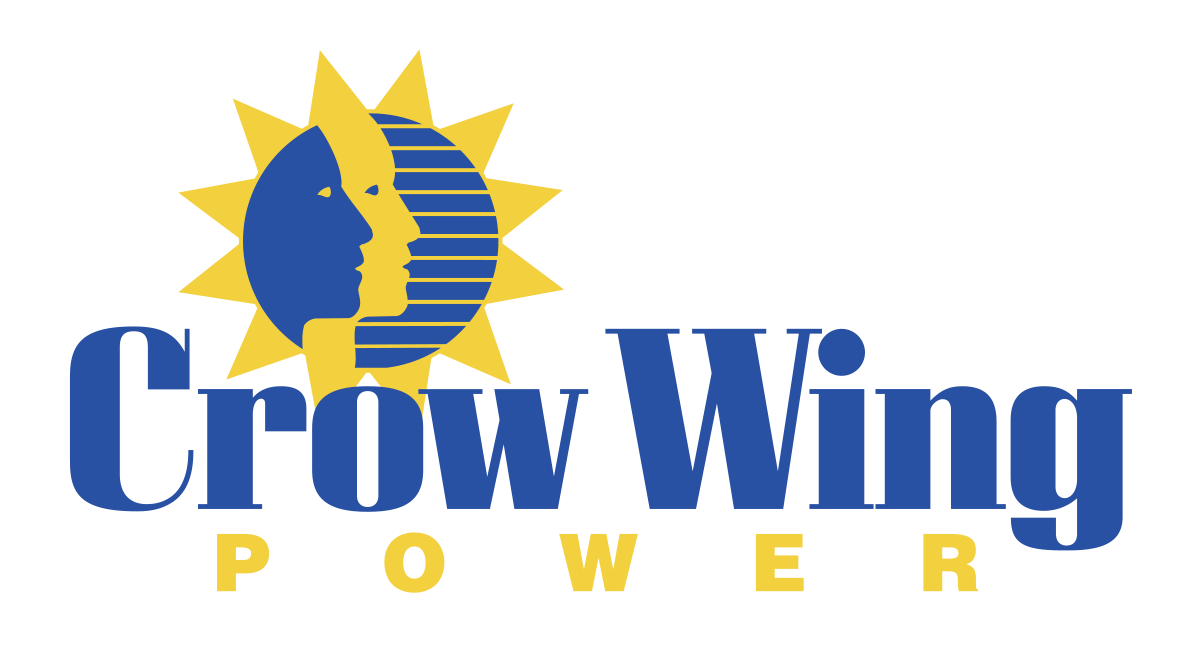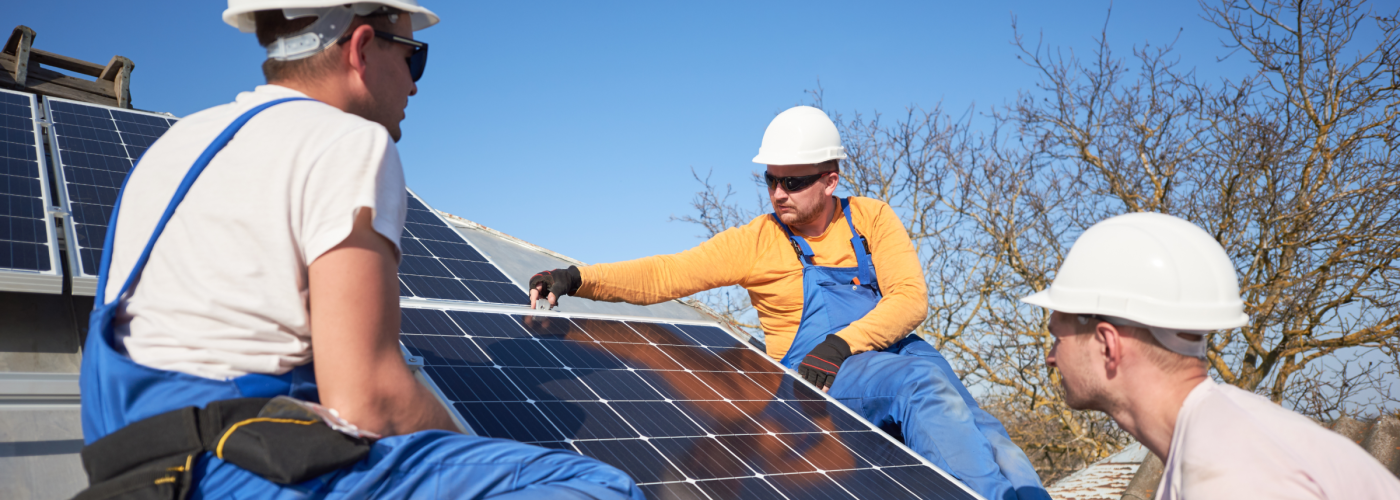With the increasing popularity of renewable energy, many members want to learn more about installing their own solar or wind generation system as a way to save money and protect the environment.
Grid-connected generation systems allow you to power your home or business with renewable energy.
Crow Wing Power is responsible for maintaining a safe and reliable electric grid to power the members we serve. As an increasing number of consumers install grid-connected Distributed Energy Resources (DER) systems, like solar panels or small wind turbines, we are here to assist members with their projects and protect the soundness of the grid.
If you are planning to connect to Crow Wing Power’s grid to buy and/or sell power, it is extremely important to contact us before you begin so we can facilitate a smooth process for your interconnection. It is also recommended to consult a qualified electrician to determine the costs to make any needed adjustments. Due to State, Federal, electrical code requirements and safety, certain processes must be completed before any DER being interconnected.
Get your Member Owned Generation
DER project started the right way
Before you begin contact Luke Christiansen or Jeff Wohlert.
(218) 829-2827 or (800) 648-9401
Member Owned Generation Information
To streamline this application process, Crow Wing Power has implemented the use of NOVA Power Portal. This online platform guides you through the necessary steps to complete your application, providing status updates, sending reminder emails, and more.
Nova Power Portal
What is the average cost of a solar system?
The average system without battery storage is $4,000 per kW before any incentives/credits. For example, a 10kW system would be approximately $40,000.
Prices typically range from $3,500 to $6,500 per kW.
What is the average size of a solar system?
The average size of system on our grid is 12kW.
What does Crow Wing Power pay me for energy put back on the Grid (Net Metering) for 2025?
Rate for residential members .12006/kWH
Rate for Small Commercial is .1194/kWH
Rate for Large Commercial is .0564/kWH
What size solar system can qualify for Net Metering?
39.99kW and lower.
The size of a system is based upon the aggregate nameplate value of the inverters on the system.
Are there any fees from Crow Wing Power to hook up solar to Net Metering?
Yes. Generally there is a $100 Application Fee and a $475 Interconnection Fee
3-phase systems and/or 40kW and larger please contact the Cooperative.
Additional fees may arise to change out transformers and/or infrastructure improvements to accommodate the load they are adding to Crow Wing Power Grid.
Does Crow Wing Power offer any incentives?
No. The only incentive that is currently available is a one time federal tax credit of 30% of the project cost.
If I have a Subtractive Meter(s) will they work with Net Metering?
No. Any Subtractive Meters will need to be converted to a Direct Meter configuration or the load put on the General Service.
Can I be on a special rate such as a Rate 14 (All Electric) or a Rate 45 (Heat Pump) and have Net Metering?
No. It would have to convert to a Rate 10, 25 or 30. Other rates will work, but most projects will fall within these three rates.
Can I still get power from Crow Wing Power when I need more than I produce?
Yes. Crow Wing Power has members participating in Net Metering, who both buy and sell power to the grid. In Minnesota, winter days are short with little sunlight. During those times you will likely need power from Crow Wing Power.
Consumer protection — read before you buy.
We care about you. When considering your own power generation, we recommend that you use a reputable company, that you procure three bids, and you request referrals to protect yourself from a poor investment. Whenever possible, we suggest working with local companies.
Does installing a solar system reduce the cooperatives wholesale electrical bill?
Not really. Crow Wing Power does not produce any power it sells, we purchase electricity from generation wholesale companies like Basin Electric and Great River Energy. The main cost of these purchases is the Demand and Transmission costs. These are determined by a once-a-month ½ hour peak of energy consumption. These typically occur in the morning hours in the Spring, Winter and Fall and the amount of solar on at the grid at that time is negligible. In Summer months the peak is typically in the early evenings when solar production can be higher, but all it takes is one cloudy humid day to set a ½ hour peak for the month and then the solar does not help the cooperative.
Does Crow Wing Power install solar systems?
No. It is recommended to contact at least three local installation companies to explore pricing and options.
Do solar panels work with snow on them?
It depends on the amount and type of snow.
Can solar panels be ‘cleaned off’ if there is snow on them?
Anything that impedes sunlight reaching the elements internal to solar panels will hinder generation. A cloudy sky, fog, and rain will reduce solar generation, but may not totally prevent it. Snow or ice directly on the panels may significantly reduce solar generation.
Crow Wing Power recommends talking to solar panel manufacturers to determine if and how they should be maintained.
How to choose a contractor—with care and research.
Crow Wing Power recommends choosing a local contractor and researching their quality and history of their installations.
This link is a third party non-profit link to how to choose a contractor.
https://www.cleanenergyresourceteams.org/story/take-care-selecting-electrical-and-solar-contractors
What is my co-op’s position with respect to distributed generation?
Safety of the Cooperative’s field staff Line Persons and Electricians is the primary concern. Crow Wing Power reviews all submitted system designs and performs field-testing to ensure the people who keep your lights on are protected.
Crow Wing Power supports distributed generation if developed and installed in compliance with the Cooperative’s board approved policies (available at www.cwpower.com).
Crow Wing Power is an electrical cooperative. Keeping costs low and while maintaining exceptional electrical reliability is who we are. Solar systems are currently the primary distributed generation choice among some cooperative members. Through State mandates, Crow Wing Power is required to buy Net Metered distributed generation electricity (excess solar generated electricity put back on the grid from member’s solar systems) for more than Crow Wing Power sells it to our members. This has a negative effect on the Cooperative’s bottom line. Due to the relatively small percentage of DER systems on Crow Wing Power’s grid at this time, the effect is minimal to the Cooperative.
Does Crow Wing Power provide rebates for installing solar system?
No.
Should I invest in energy efficiency improvements first?
Yes! Completion of an energy efficiency audit is an important precursor to considering and understanding the economics of distributed generation for you. Implementing energy efficiency measures in advance of installing a renewable energy system can save you money by reducing your overall energy or water consumption, which subsequently reduces the size of the distributed generation system you may to meet your energy needs.
We live in Minnesota. Adding additional insulation or any weatherization improvement to the shell of your residence or business is one of the best long-term return on investments for energy efficiency you can make. It reduces saves a lot of carbon waste.
Crow Wing Power provides free energy assessments. These are ‘walk-through’ audits typically taking up to one hour to perform. Be prepared to take notes, as there is no formal report issued. However, there are often multiple energy saving opportunities at most typical residential homes and businesses.
What effect will a potential widespread installation of small scale solar have on the Cooperatives’ members? That is unknown.
A potential positive effect may be if widespread battery storage associated with DER system generation reaches a critical mass where it could make a significant difference to the Cooperative’s purchasing and transmission costs. Potentially the battery storage units could be utilized to mitigate a monthly demand peak, saving the Cooperative money. That is not the situation currently.
Concerns for the Cooperative, in regard to maintaining reliability and keeping our member’s lights on, the following analogy may seem familiar to anyone who does not have a land-line phone anymore and just has a cellphone. Though you may not have a landline anymore your neighbor down the street may have one. The telephone company must still maintain their entire network including the line that runs past your place to your neighbors. They then need to do this with fewer customers to pay for it. This puts more of the burden on the folks who still use the telephone services. Our Cooperative is not there yet, but the day may be coming. Electric transmission lines, substations and other delivery infrastructure cannot simply be declared unused and retired because that infrastructure is collectively needed for reliability of all our membership. Ratepayers typically support this infrastructure through their monthly bills.

